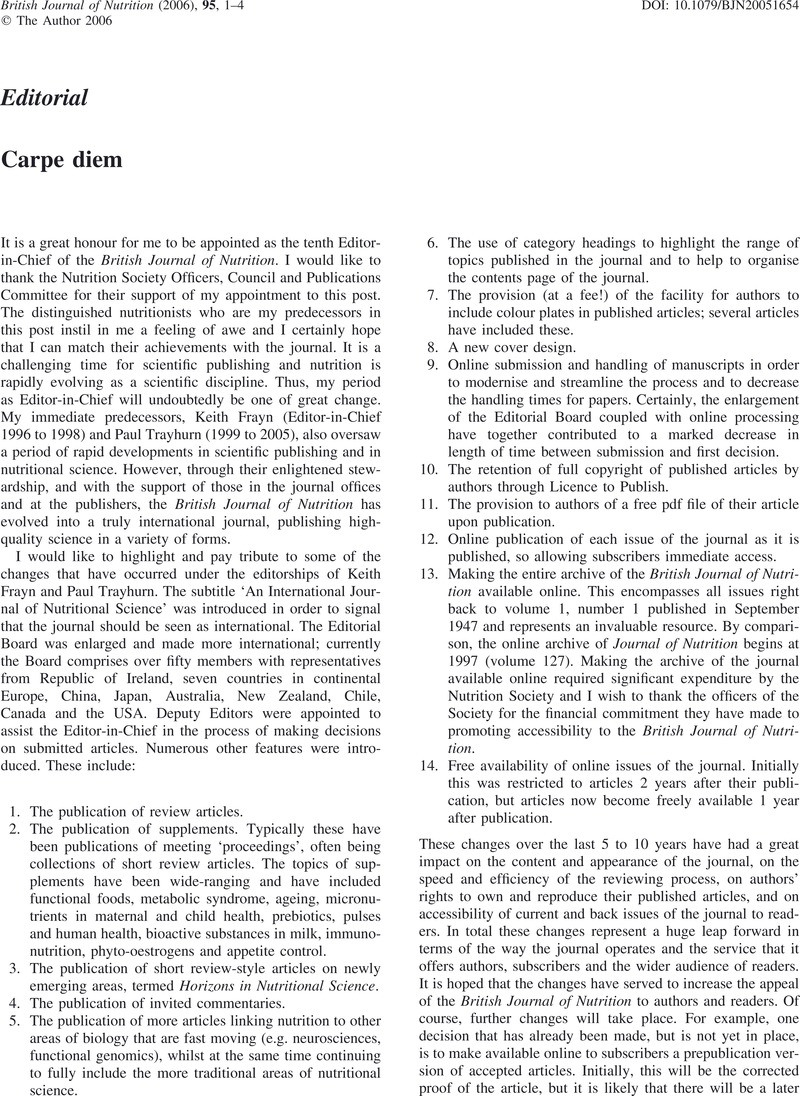Crossref Citations
This article has been cited by the following publications. This list is generated based on data provided by Crossref.
Calder, Philip C.
2006.
The British Journal of Nutrition, an international journal that continues to develop.
British Journal of Nutrition,
Vol. 96,
Issue. 01,
p.
1.
Calder, Philip C.
2007.
Floruit floreat.
British Journal of Nutrition,
Vol. 97,
Issue. 1,
p.
1.
Calder, Philip C.
2007.
Happy Birthday BJN!.
British Journal of Nutrition,
Vol. 98,
Issue. 3,
p.
447.
Topping, David L.
Bajka, Balazs H.
Bird, Anthony R.
Clarke, Julie M.
Cobiac, Lynne
Conlon, Michael A.
Morell, Matthew K.
and
Toden, Shusuke
2008.
Resistant starches as a vehicle for delivering health benefits to the human large bowel.
Microbial Ecology in Health and Disease,
Vol. 20,
Issue. 2,
p.
103.
Calder, Philip C.
2008.
Record citations in 2007, but impact factor slips.
British Journal of Nutrition,
Vol. 100,
Issue. 4,
p.
687.
Calder, Philip C.
2009.
BJN impact factor rises.
British Journal of Nutrition,
Vol. 102,
Issue. 9,
p.
1243.
Calder, Philip C.
2010.
BJN impact factor increases by 25 %.
British Journal of Nutrition,
Vol. 104,
Issue. 5,
p.
621.
Calder, Philip C.
2011.
More citations, but a fall in impact factor.
British Journal of Nutrition,
Vol. 106,
Issue. 6,
p.
789.
Calder, Philip C.
2012.
BJN gets a new sister!.
British Journal of Nutrition,
Vol. 107,
Issue. 11,
p.
1561.
Calder, Philip C.
2012.
Record citations in 2011 contribute to maintenance of the impact factor of BJN.
British Journal of Nutrition,
Vol. 108,
Issue. 5,
p.
759.
Burdge, Graham C.
2013.
Increasing numbers of citations and higher impact factor in 2012: the British Journal of Nutrition continues to show steady improvement.
British Journal of Nutrition,
Vol. 110,
Issue. 7,
p.
1165.



